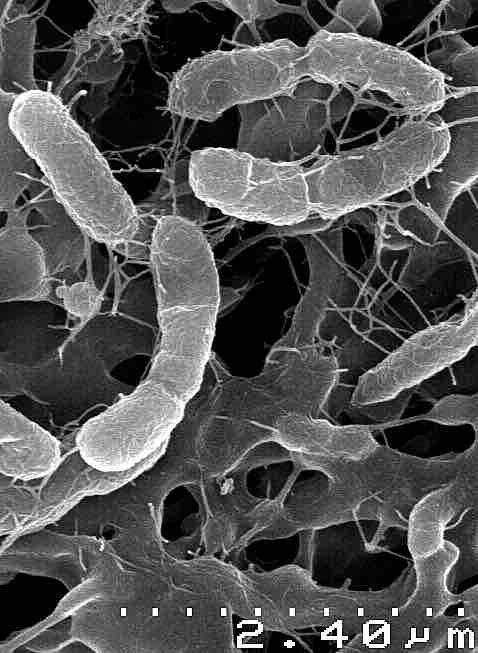In biochemistry, chemosynthesis is the biological conversion of one or more carbon molecules (usually carbon dioxide or methane) and nutrients into organic matter using the oxidation of inorganic molecules (e.g. hydrogen gas, hydrogen sulfide) or methane as a source of energy. Chemoautotrophs, organisms that obtain carbon through chemosynthesis, are phylogenetically diverse. Groups that include conspicuous or biogeochemically-important taxa include the sulfur-oxidizing gamma and epsilon proteobacteria, the Aquificaeles, the methanogenic archaea and the neutrophilic iron-oxidizing bacteria.
A thermophile is an organism that thrives at relatively high temperatures, between 45 and 122 °C (113 and 252 °F). Thermophiles are found in various geothermally heated regions of the Earth, such as deep sea hydrothermal vents. As a prerequisite for their survival, thermophiles contain enzymes that can function at high temperatures. Some of these enzymes are used in molecular biology (for example, heat-stable DNA polymerases for PCR), and in washing agents.
Thermophiles are classified into obligate and facultative thermophiles: Obligate thermophiles (also called extreme thermophiles) require such high temperatures for growth, whereas facultative thermophiles (also called moderate thermophiles) can thrive at high temperatures, but also at lower temperatures (below 50°C). For example, Venenivibrio stagnispumantis gains energy by oxidizing hydrogen gas.

Venenivibrio
Scanning Electron Microscopy image of Venenivibrio stagnispumantis, a species which gains energy by oxidizing hydrogen gas.
Many microorganisms in dark regions of the oceans also use chemosynthesis to produce biomass from single carbon molecules. Two categories can be distinguished. In the rare sites at which hydrogen molecules (H2) are available, the energy available from the reaction between CO2 and H2 (leading to production of methane, CH4) can be large enough to drive the production of biomass. Alternatively, in most oceanic environments, energy for chemosynthesis derives from reactions in which substances such as hydrogen sulfide or ammonia are oxidized to produce formaldehyde (which will be used to make carbohydrates) and solid globules of sulfur. This may occur with or without the presence of oxygen. In bacteria that can do this, such as purple sulfur bacteria, yellow globules of sulfur are present and visible in the cytoplasm.
Many chemosynthetic microorganisms are consumed by other organisms in the ocean, and symbiotic associations between chemosynthesizers and respiring heterotrophs are quite common. Large populations of animals can be supported by chemosynthetic secondary production at hydrothermal vents, methane clathrates, cold seeps, whale falls, and isolated cave water. Indeed, it has been hypothesized that chemosynthesis may support life below the surface of Mars, Jupiter's moon Europa, and other planets. Giant tube worms use bacteria in their trophosome to react hydrogen sulfide with oxygen as a source of energy.